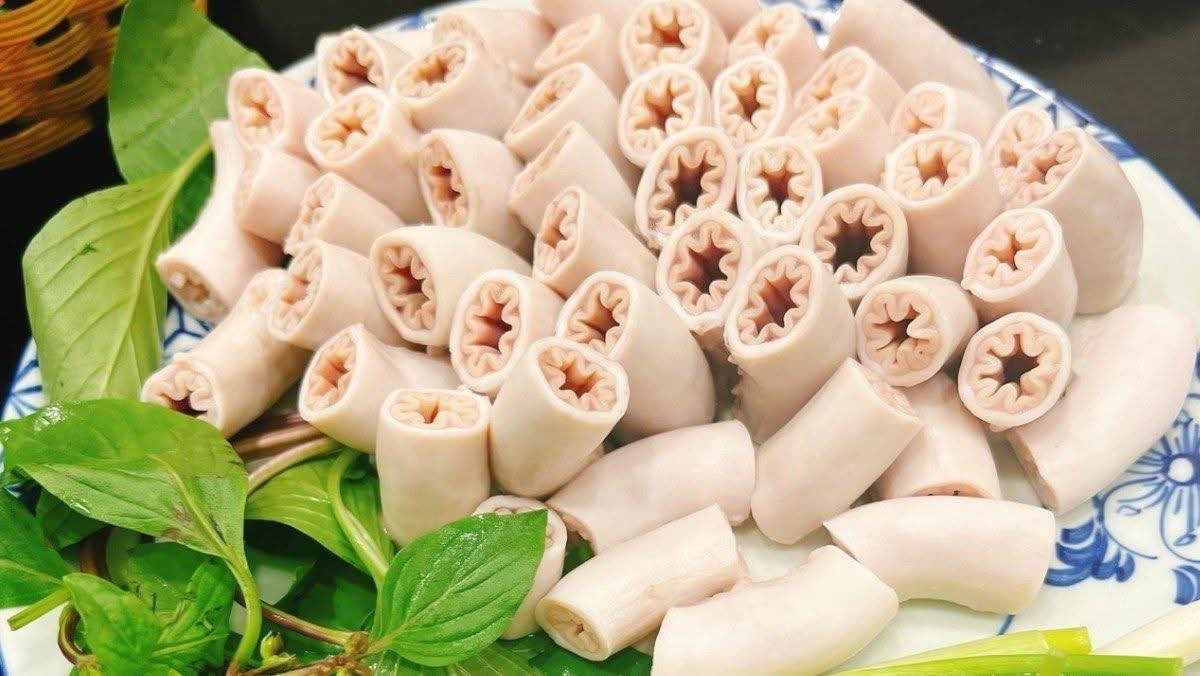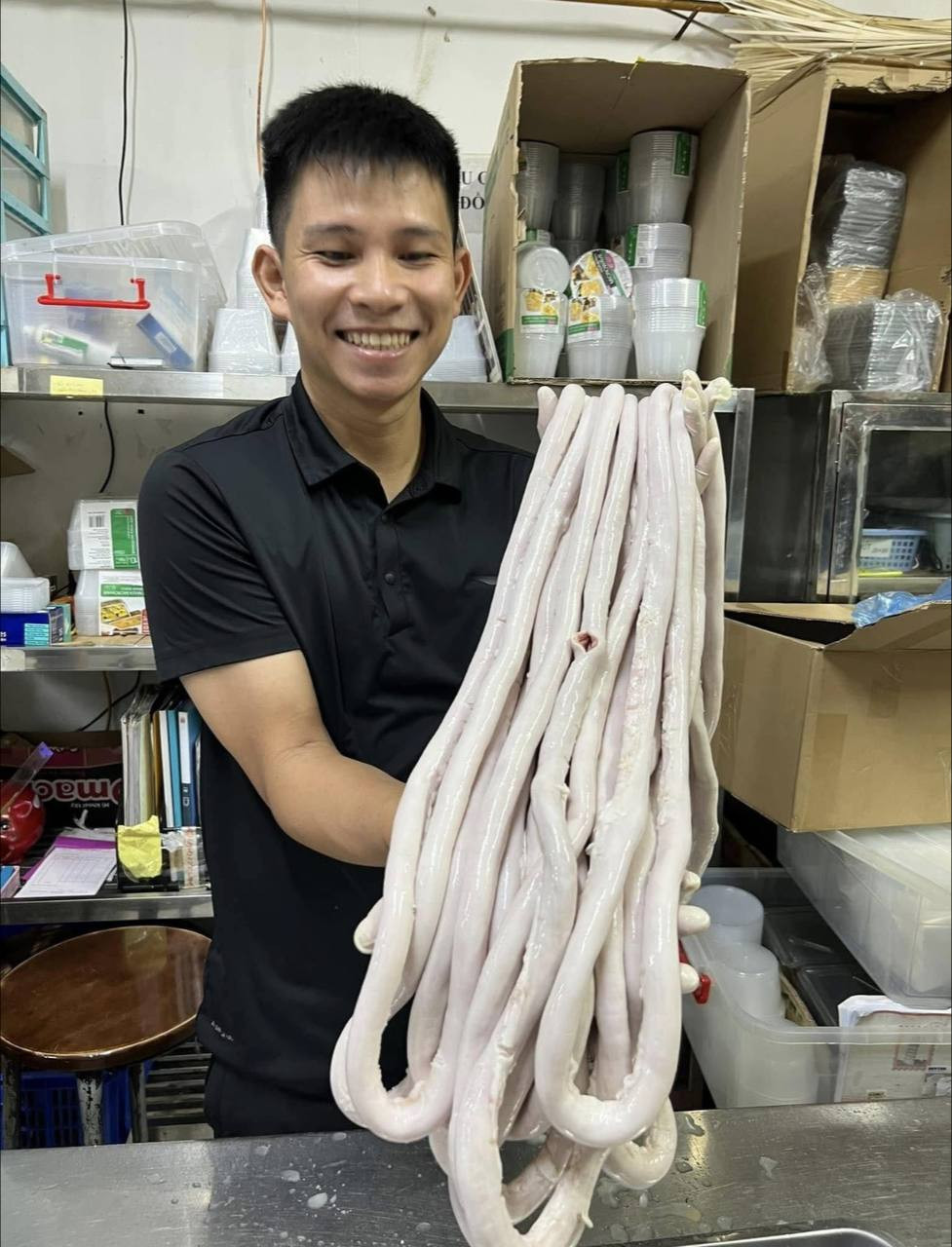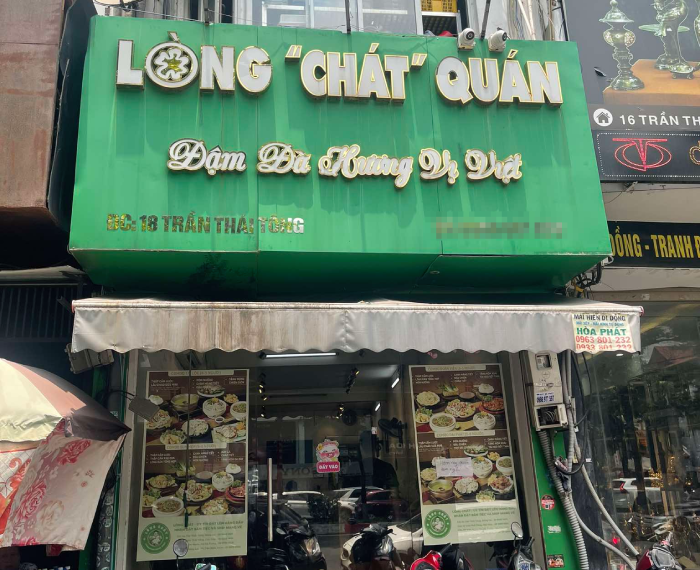What began as a viral food trend has now triggered a national debate and regulatory inspections. A rare pork delicacy known as lòng se điếu has sparked outrage on social media, prompting concerns over food safety and authenticity.
The origins of the debate

In recent weeks, the term “lòng se điếu” has flooded social media, drawing intense debate over its origins and the legitimacy of its rising popularity. Also called lòng xe điếu or phèo hai da in southern Vietnam, the dish consists of a section of a pig's small intestine characterized by thick walls and intricate folds, offering a rich, crispy texture when cooked.
According to slaughterhouse professionals, this specific type of intestine is extremely rare, usually found in older breeding sows raised traditionally on farms. The chance of finding such an intestine is estimated at just 1 in 1,000 to 1 in 10,000 pigs. The delicacy is priced between VND 1.5 to 2.5 million (USD 59–98) per kilogram.
Controversy erupted following an April Facebook post by a user named P.B.H., who claimed over 30 years of experience in pig slaughtering. He argued that genuine lòng se điếu was so rare that its widespread availability seemed dubious. He raised concerns over the possible use of chemicals to imitate the dish, warning of potential health risks. The post quickly went viral, attracting thousands of shares and polarized opinions.
Renowned chef V.Q. in Ho Chi Minh City added fuel to the fire, questioning the authenticity of the increasingly common dish. He speculated that it might be made from ordinary pig intestines, chemically treated to appear special, or even derived from diseased pigs.
The chef went so far as to offer a VND 1 billion (USD 39,400) reward to anyone who could prove the dish's legitimacy. To qualify, contestants would need to provide legal documentation, food safety certifications, unedited video footage of the slaughter and extraction process, and confirmation from the slaughterhouse owner.
The truth behind the 40-meter lòng se điếu

Amid the escalating debate, Ngo Quyen The, owner of the restaurant Lòng Chát, released a video showcasing a 40-meter-long, 5.8 kg lòng se điếu, which drew immediate skepticism.
Experts noted that the average intestine length in a market pig (weighing 90–120 kg) is only 18–20 meters. A 40-meter length is biologically implausible, prompting speculation that the product might be frozen imports or artificially processed to appear rare.
Consumers began calling for regulatory oversight to ensure food safety and protect public health.
On May 8, the Food Safety Task Force of Cau Giay District (Hanoi) inspected the Lòng Chát restaurant at 18 Tran Thai Tong Street. During the inspection, the owner admitted to false advertising, saying the “40 meters” claim was exaggerated. Measured by footstep estimation, the actual length was only about 25–27 meters.
The owner publicly apologized but failed to provide credible documentation proving the source of the intestines. Instead, he presented a vague food supply contract from a private vendor in Thuong Tin (Hanoi) without official slaughterhouse records.
Simultaneously, the Ho Chi Minh City Food Safety Authority launched a sweep of establishments selling lòng se điếu, including Lòng Chát’s Tan Binh branch. Authorities are investigating origins and testing samples for illegal additives such as formalin and hydrogen peroxide. Test results have not yet been released.
Health risks and chemical concerns

Dr. Nguyen Huy Hoang of the Vietnam-Russia Hyperbaric Oxygen Center (Ministry of National Defense) warned that intestines - especially rare types like lòng se điếu - are prone to bacterial contamination (e.g., E. coli, Salmonella) and parasites (e.g., roundworms, tapeworms) if not thoroughly cleaned and cooked.
Unethical vendors may use banned substances like formalin, hydrogen peroxide, or alum to bleach, preserve, and enhance texture. Formalin, classified as a carcinogen by the World Health Organization (WHO), is toxic to the liver and kidneys.
Dr. Hoang also noted that lòng se điếu might occur more frequently in pigs with digestive issues or parasitic infections. While the dish may be a culinary curiosity, consumers are urged to prioritize safety and choose reputable food providers.
Phuong Thuy